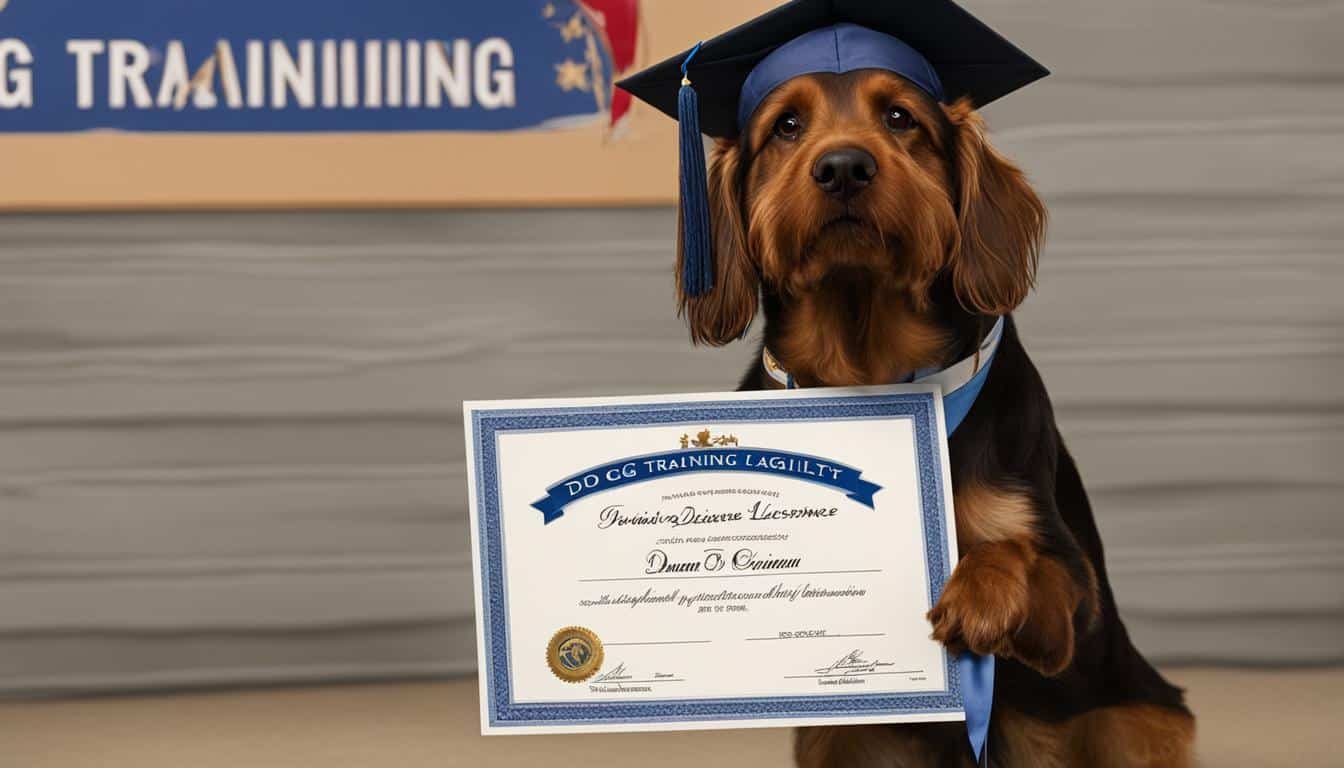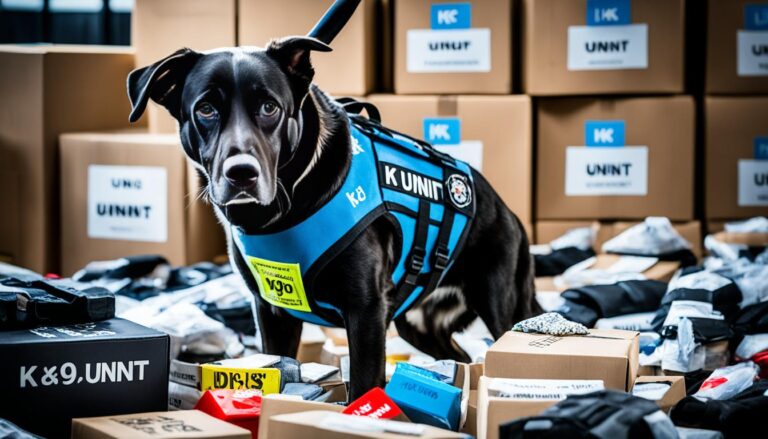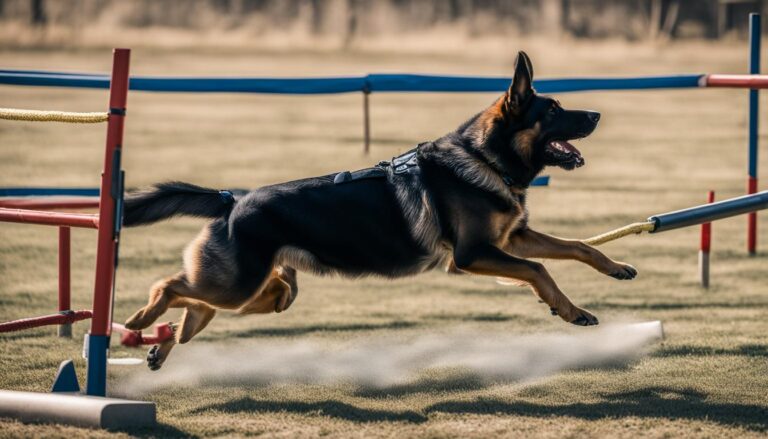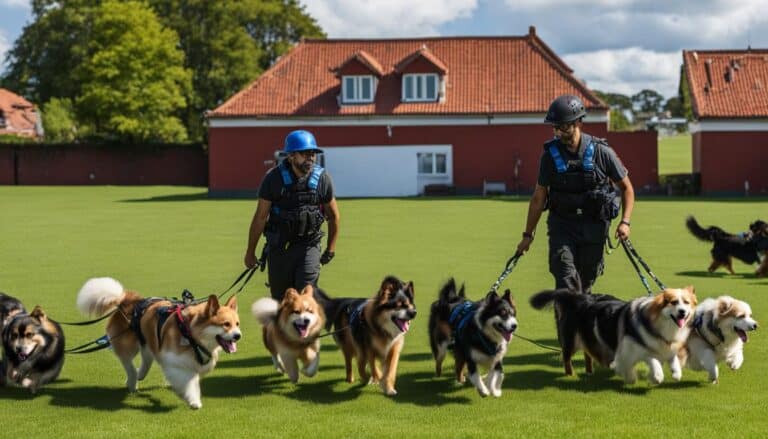How to Get a Dog Training License
Are you a dog lover? Do you find yourself captivated by the unique bond between humans and their furry companions? If so, then a career as a dog trainer could be your calling. Imagine the satisfaction of helping dogs and their owners communicate effectively, resolving behavioral issues, and creating a harmonious relationship.
But how do you turn your passion for dogs into a rewarding profession? One crucial step is obtaining a dog training license. This article will guide you through the process of becoming a certified dog trainer, from meeting the necessary requirements to completing the essential training and education. Let’s embark on this exciting journey together!
Before we dive into the details, let’s take a moment to reflect on what motivates you to pursue this career. Perhaps you’ve had a personal experience with a dog who struggled with obedience or behavioral issues, and you witnessed the transformation that professional training made in their life. Or maybe you believe in the incredible capacity of dogs to learn and adapt, and you’re eager to unlock their full potential.
Whatever your reason may be, getting a dog training license is the first step towards turning your passion into a profession. It’s an opportunity to gain the necessary knowledge and skills, join a community of like-minded professionals, and make a difference in the lives of dogs and their owners.
So, are you ready to embark on this journey of becoming a certified dog trainer? Let’s explore the essential steps, requirements, and resources needed to make your dream a reality. Get ready to unleash your potential and transform the world, one tail wag at a time!
Training Your Own Dog
The first step on your journey to becoming a successful dog trainer is to train your own furry friend. This hands-on experience will help you build a solid foundation and develop advanced skills in dog training. By training your own dog, you will gain valuable insight into building a training routine and mastering more advanced commands and behaviors.
Start by teaching your dog basic commands like “sit” and “down.” These fundamental commands form the basis of any training routine. As your dog becomes proficient in these basic skills, you can gradually introduce more advanced commands and behaviors. For example, teaching your dog to stay put even in the presence of distractions is a great way to build their focus and impulse control.
Setting goals for you and your dog can provide motivation and direction. One popular goal is to work towards the AKC Canine Good Citizen (CGC) certification. This certification tests your dog’s obedience and good manners in various real-life situations.
Engaging in dog sports is another effective way to enhance your training skills. These activities not only provide mental stimulation and physical exercise for your dog but also teach you important concepts such as timing, rate of reinforcement, and reward placement. Whether it’s agility, obedience, or scent work, participating in dog sports can further expand your expertise and deepen the bond between you and your furry companion.
Keep in mind that training your own dog won’t always be smooth sailing. You may encounter problem behaviors along the way. However, this is an opportunity for you to learn and grow as a trainer. By modifying and addressing these behaviors, you’ll gain valuable experience that will prepare you to handle similar issues when training other dogs in the future.
Training your own dog not only builds your training skills but also strengthens the bond between you and your canine companion. Remember, your own dog doesn’t have to be perfect, but the hands-on experience you gain will give you the confidence and expertise to help other dog owners and their beloved pets.
Apprenticing with Other Dogs
While training your own dog is valuable, it’s important to work with dogs that aren’t your own to further polish your skills and gain hands-on experience with different training approaches. This hands-on experience will help you become a more versatile dog trainer by exposing you to different behaviors and personalities.
There are several ways you can apprentice with other dogs:
- Friends and Family: Ask friends and family if you can train their dogs. This allows you to practice your training techniques with dogs that have different temperaments and behavior issues, giving you a chance to work with different approaches. Plus, it’s a great way to help out loved ones while gaining valuable experience.
- Shelters and Rescue Organizations: Reach out to local shelters and rescue organizations to inquire about volunteer opportunities. Many organizations have training programs or may allow you to assist with training the dogs in their care. This gives you exposure to a wide range of dogs with diverse backgrounds and needs.
- Apprenticeship with Experienced Trainers: Consider apprenticing with a successful dog trainer who can provide guidance and monitor your technique. This mentorship allows you to learn from their expertise and receive valuable feedback on your training methods. Working alongside experienced trainers will help you refine your skills and gain insights into different training approaches.
By apprenticing with other dogs and receiving guidance from experienced trainers, you’ll expand your skill set and gain a deeper understanding of canine behavior. This practical experience will give you the confidence and knowledge to handle various training challenges that may arise in your future career.
Training People to Train Their Dogs
While many people think that dog trainers primarily train dogs, the reality is that trainers train people to train their own dogs. To be successful as a dog trainer, you need to have good people skills. This means being able to motivate and shape clients’ abilities, as well as reinforce their successes.
Working with friends, family, and clients is crucial in guiding them through the process of training their own dogs. By gaining experience with human clients, you can develop the necessary skills to effectively teach and communicate with dog owners.
Helping clients understand how to train their dogs and develop their own skills is a key part of your role. By training people, you empower them to take an active role in their dogs’ development and create a strong human-animal bond.
By teaching clients how to train their dogs, you are equipping them with the knowledge and skills to maintain their dog’s behavior long-term. This not only enhances the relationship between the owners and their dogs but also promotes responsible dog ownership in the community.
Developing strong people skills is essential in effectively communicating training techniques, managing client expectations, and motivating clients to take an active role in their dog’s training. By building trust and providing ongoing support, you can ensure a positive and successful training experience for both the clients and their canine companions.
Educating Yourself
To become a successful dog trainer, it’s crucial to educate yourself in the science of animal behavior and learning. Modern dog training is based on scientific principles, such as operant conditioning and classical conditioning. Understanding these principles is essential for problem-solving with your clients and adapting your techniques to different situations.
There are many resources available to help you educate yourself in science-based dog training. Training schools and organizations like the Certification Council for Professional Dog Trainers offer courses and webinars that can help you build your knowledge and understanding. These resources cover topics such as behavior modification, positive reinforcement, and understanding animal cognition. By continually educating yourself in the field, you can stay up-to-date with the latest research and techniques, ensuring that you provide the best training for your clients and their dogs.

In addition to formal education, it’s also important to stay informed through reading books, articles, and scientific journals related to dog behavior and training. Staying up-to-date with the latest developments in the field will help you refine your techniques and broaden your understanding of how dogs learn and behave. By continuously expanding your knowledge, you can deepen your expertise and provide the most effective training solutions for your clients.
Remember, educating yourself in the science of dog behavior and learning principles is not a one-time endeavor. As the field continues to evolve, it’s essential to stay curious and open-minded, seeking out new information and learning from experts in the field. By making education a lifelong commitment, you can continually enhance your skills and expertise, ultimately becoming a more effective and successful dog trainer.
Joining Professional Organizations
Joining a professional organization is an important step in demonstrating your commitment to the dog training profession and showcasing your professionalism to potential clients. One notable organization for dog trainers is the Association of Professional Dog Trainers (APDT). Becoming a member of APDT provides numerous benefits that can enhance your career and help you stay updated with the latest advancements in training.
By joining APDT, you gain access to a vast range of resources, including courses, webinars, and educational materials, that can expand your knowledge and improve your training techniques. These resources are designed to keep you abreast of current industry trends, research, and best practices.
Additionally, being a member of APDT allows you to be listed in their trainer locator database. This listing makes it easier for potential clients to find you and gives you greater visibility in your local area. The endorsement of a professional organization like APDT adds credibility to your profile and can significantly increase your chances of attracting new clients.
- Access to cutting-edge training resources and materials
- Opportunities for professional development and continued education
- Listing in the APDT trainer locator database for increased visibility
- Networking and collaboration with fellow professional dog trainers
When you join APDT, you demonstrate your commitment to professional growth and your dedication to providing the best possible training for dogs. By affiliating yourself with a respected professional organization, you show potential clients that you are serious about your career and have the necessary skills and knowledge to meet their training needs.
Considering Certification
While certification is not required to become a dog trainer, it can greatly benefit your career. Certification demonstrates that you have met certain standards and possess the necessary skills and knowledge to train dogs professionally.
The Certification Council for Professional Dog Trainers is one organization that offers certification programs for aspiring trainers. These programs typically require a minimum number of hours of training experience, the successful completion of an exam, and adherence to specific standards of practice and codes of ethics.
Becoming a certified professional dog trainer can give potential clients confidence in your abilities and set you apart from other trainers in the field. It showcases your commitment to professionalism and validates your expertise.
To illustrate the importance of certification, let’s consider a scenario:
- You, as a certified professional dog trainer, have completed the necessary training and education, accumulated a significant amount of practical experience, and passed a rigorous examination.
- A potential client is looking for a trainer and comes across your website and certifications. They see that you are a “Certified Professional Dog Trainer” and that you adhere to the highest standards of practice and professionalism.
- The client, impressed by your certification and qualifications, decides to reach out to you for a consultation.
- You establish a great rapport with the client, showcase your knowledge and skills during the consultation, and discuss your approach to training.
- The client, confident in your abilities and impressed by your professionalism, decides to hire you as their dog trainer.
As you can see, obtaining certification can give you a significant advantage in building your dog training business. It establishes credibility and trust with potential clients, and sets you apart as a qualified professional in the industry.
Different Certification Options
When it comes to becoming a certified dog trainer, there are different options to choose from. Two popular certifications in the industry are the Certified Professional Dog Trainer-Knowledge Assessed (CPDT-KA) and the Certified Professional Dog Trainer-Knowledge and Skills Assessed (CPDT-KSA).
The CPDT-KA certification is designed to assess your knowledge in dog training. To be eligible for this certification, you’ll need to have a minimum of 300 hours of experience training dogs. Once you meet the eligibility requirements, you’ll then have to pass a multiple-choice exam that covers various topics related to dog behavior, training techniques, and ethical practices. Achieving the CPDT-KA certification demonstrates your knowledge and understanding of the principles and practices of dog training.
The CPDT-KSA certification, on the other hand, focuses not only on your knowledge but also on your practical training and instruction skills. In addition to the minimum training experience requirement, you’ll be evaluated through hands-on exercises that assess your ability to effectively train dogs and teach others. This certification is ideal for individuals who excel in both the theoretical and practical aspects of dog training.
Both certifications have their own eligibility requirements and examination processes. It’s crucial to review the specific criteria and guidelines provided by the certifying organization to ensure you meet all the necessary qualifications. Remember, obtaining a certification can enhance your credibility as a professional dog trainer and give you a competitive edge in the industry.
Benefits of Certification
Becoming certified as a dog trainer offers several advantages that can greatly enhance your career in the field. From personal satisfaction to gaining a marketing edge, certification plays a crucial role in professionalizing the industry. Let’s explore the key benefits of certification:
- Personal Satisfaction: Achieving certification demonstrates that you have met rigorous standards in science-based dog training. This accomplishment brings a sense of personal fulfillment and validates your expertise in the field.
- Continuing Education: Certification motivates you to engage in lifelong learning and stay up to date with the latest science-backed techniques and advancements in dog training. By continuously expanding your knowledge, you can provide the best possible training solutions for your clients.
- Marketing Edge: Being certified sets you apart from other dog trainers and showcases your commitment to professionalism and high standards. It gives potential clients and prospects confidence in your skills and expertise, making it easier to attract and retain clients.
- Professionalizing the Field: Certification helps raise the bar in the dog training industry by establishing standardized qualifications and expectations. By adhering to certification standards, you contribute to the professionalization of the field and promote the recognition of qualified professionals as dog trainers.
By obtaining certification as a dog trainer, you not only benefit personally but also elevate the standards of the profession as a whole. Investing in your professional development through certification is a vital step towards building a successful and respected career in the dog training industry.

Recertification and Continued Learning
Once you have achieved your certification as a dog trainer, your journey of learning and growth doesn’t end there. Staying up to date with the latest advancements in the field and maintaining your certification are essential to your professional development.
Most certification programs require trainers to recertify every few years to ensure they stay current and maintain their skills. This can be done through accumulating continuing education units or by retaking the certification exam. These recertification requirements serve as a way for trainers to demonstrate their commitment to ongoing education and professional excellence.
Continuing education opportunities, such as workshops, seminars, and conferences, play a crucial role in helping you stay at the forefront of the industry. They provide valuable learning experiences, where you can deepen your knowledge, expand your skill set, and learn new techniques and approaches from experts in the field. By actively participating in such events, you can continue to improve as a certified dog trainer and offer the best possible service to your clients.
By investing in recertification and continuing education, you not only enhance your own expertise but also uphold the credibility and professionalism of the dog training industry. It’s a way to showcase your dedication to providing the highest quality of care and training for dogs and their owners, gaining the trust and confidence of your clients.






